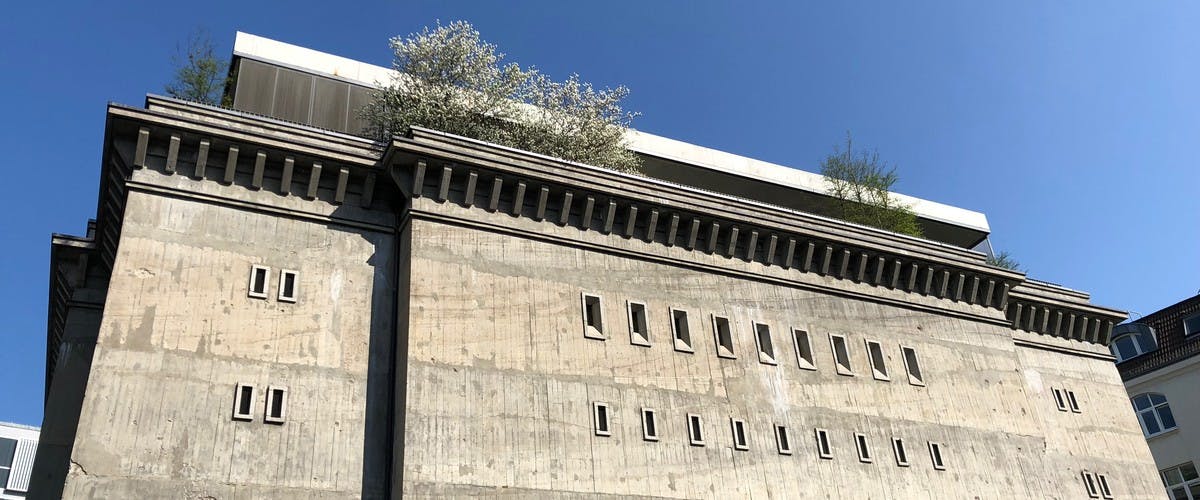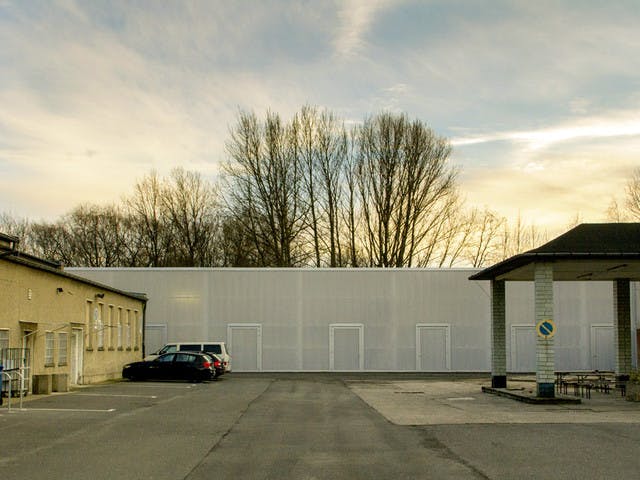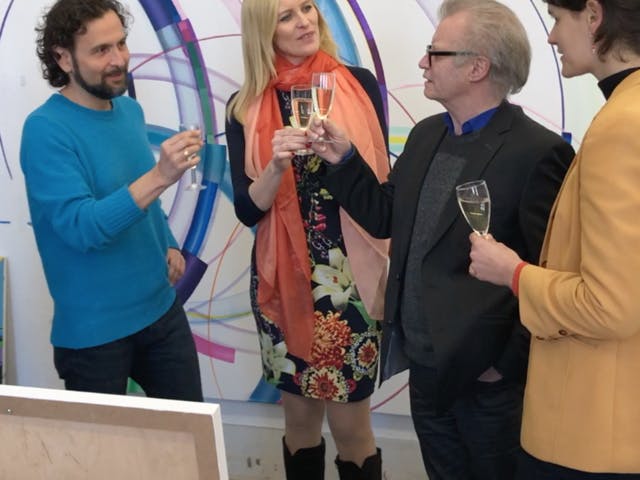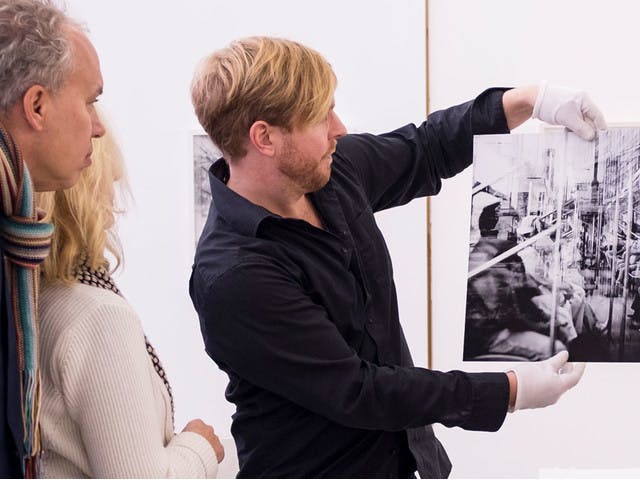The 2015 sale of Claude Monet's Les Peupliers by MOMA at London's Impressionist & Modern Art evening sale sent dissatisfied ripples through the ranks of art lovers. Instead of a focus on sharing the master's work or spreading the appreciation of impressionism, the goal was purely financial. This sale is but one example of a new direction shared by many public museums: away from education and toward commercialism. Combined with the particular interests of established museum curators, these market-driven interests have made Berlin art museums less of a draw for tourists who seek out collections intent on sharing socially and historically vital art pieces. Instead, these cultural explorers opt for private collections, Berlin art galleries, and exclusive tours.
Visitors with an interest in art have not shifted entirely away from the well-known attractions. The Pergamon Museum on Museum Island remains the ultimate destination for international art tourism in Berlin. Well-known private collections like the Hoffman, Haubrok, and Boros Collection, or the ME Collectors Room draw more attention than ever before. As classic museums attempt to remain both relative and attractive while focusing more on financial matters, private Berlin art collections approach art in more accessible and subjective ways. They give visitors a glimpse into the tastes, passions, and whims of collection owners and organizers. Some even inject a sense of fun and the curator's fallability, which adds a more human dimension to the art.
This personal approach to art appreciation draws more visitors to seek out private tour Berlin opportunities like ours. Among other important Berlin institutions and art exhibitions, the Boros Collection remains a favorite for its historical significance and colorful past. In 2003, Christian and Karen Boros purchased this WWII bunker on the Reinhardtstrasse in Mitte. Built in 1942 by Karl Bonatz as nazi-funded protection against Allied air attacks, this five-story building served its purpose well. After the war, the citizens of East Berlin used it to store fruit. In 1989, the newly-opened border between east and west inspired the music underground scene to transform it into a techno party hotspot. This diverse and contradictory past, and the associated dichotomy between the two Berlins of years gone by, inspired the latest owners to share one of the best collections of contemporary art Berlin has to offer. It features more than 700 pieces from 80 different artists.
The sterilization of these personal art experiences has historically been dangerous. Throughout time, people in power have manipulated art to support political philosophies, ensnare the public with certain ideologies, or dwindle to little more than creative market currency. This was seen multiple times with the Nazis, Stalinist power, and during the Cultural Revolution in China. Art became utilitarian instead of a manifestation of free passions and exploration of every cultural aspect, emotion, and imaginative expression the whole of humanity experiences. This more intimate experience is why an ever-increasing flood of art fans visit places like the Boros Collection and other less-known or secret things to do in Berlin. Unfortunately the tours are mostly booked out way ahead of time and due to the architecture of the building there is a rather small limit of visitors allowed per visiting slot. However, Berlin has a wide array of possibilities and belongs to the most suitable cities in the world to discover and explore via the arts.
While tours are available by appointment throughout the year, cultural visitors may want to schedule their trips to Germany to coincide with the Gallery Weekend Berlin Special Visit. Public viewing of the entire Boros Bunker collection will be available without appointments on Saturday, April 28 and Sunday, April 29 from 10:00 to 6:00 pm. At just 12-€ per person, a journey into this excellent collection housed in the unique and significant bunker building is something you should not miss.
By all means visit the well-loved art museums of Berlin on your journey to this iconic city, but remember that the paintings and sculptures you see are not the whole story. Just as the Monet vanished from its walls in 2015 at auction and sank into obscurity, other works have likewise been relegated to the unseen corners of the art world. That Monet went for a reasonable $14 million, much less than some contemporary artists like Peter Doig or Ai Weiwei. The money raised undoubtedly helped some other art find public appreciation, just as patrons and politics of centuries past determined the success or failure of artists then. From the seventeenth century's cabinets of curiosity, or Wunderkammern, that first diplayed cataloged collections of art and objects, to the modern museums of today, art cannot escape intertwining with and being affected by politics and the consumer arkets. Selling a famous piece by such a prominent artist at auction demonstrates this more clearly than anything.
Museums have bills to pay, of course, and need money to operate, grow, and attract visitors. The traditional goals of sharing art with the masses, inform people of new ideas and techniques, and celebrate canon require balance with the everyday business of funding, marketing, and keeping private investors happy. American art critic Jerry Saltz wrote in Vulture that museums have experienced a type of death or transformation into "platforms for spectacle, as though the party-driven, global-art-fair feeding frenzy had taken up residence in one place." This invasive attitude has led to increased interest in privately held art collections not entangled in the consumerism mess. It lures visitors from all over the globe to seek out more intimate and particular interactions on unique art tours in Berlin.
Of course, private collections require money too. The difference is a type of blatant honesty about what they offer and how they can do so. Christian Boros's The New Yorker interview included a quote that said their bunker collection is "an add-on rather than a better model" when comparing it and others like it to established museums. Collections of contemporary art held by individuals, private groups, or the artists themselves demonstrate a more visceral enthusiasm for the art instead of a continuous nod to outside interests, tourism, and marketability. This is part of what makes the Boros Collection and other smaller art stops on our exclusive tours so invigorating to art fans and cultural explorers alike.
Berlin exhibitions of privately held artwork do also attract naysayers who find them insufficient or self-serving instead of illuminating to the general public. Hal Foster, art historian, stated these smaller galleries and groups were "neo-aristocratic institutions." Despite their detachment from the established art world held in museums, private collections cannot challenge the capitalist status quo that touches ever corner of the art world in some way. One or more unafilliated collections cannot end injustice, solve social problems, or even begin to attack the financial world's hold on art or life in general. As part of the market itself, these Berlin art galleries represent a relatively safe yet noticeable rejection of more traditional and rigid ways.
Art afficianados, cultural tourists, and visitors seeking the old masters or new inspiration flock to Berlin every year. The city of Berlin as the center of contemporary art in Europe stands at a crossroads between the old world and the new, ingrained traditions of the art world, and new forays into modern ideals. Nothing represents this more fully than the imposing WWII concrete bunker that houses the Boros Collection today: built to withstand bomb blasts and the eternal passage of time, yet crowned now with the luminous glow of a delicate glass top floor. It and other smaller, private art collections bring a new and intriguing experience to a global audiences intent on seeking out and soaking in the true face of contemporary art in Berlin.
As experienced art experts and gallery owners in Berlin, our global team of creative guides has an over 10 year track record of delivering tailor-made art experiences. We love to share our personal knowledge to introduce you to our city via the arts. Each tour is a unique combination of historic art walk, visit of iconic galleries, hidden art spaces and the finest selection of contemporary artists in their unique creative studio spaces. Half-day to full day experiences that are truly unforgettable, off the beaten track and showing you the best in culture to learn about and personally encounter the real Berlin. Available as group tours, public tours and private tours. For dates and quotes, find more information here.




